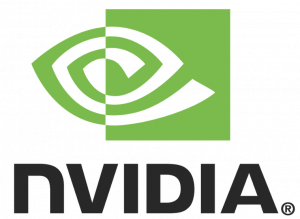How To Install Nvidia Drivers on Ubuntu 24.04 LTS

In this tutorial, we will show you how to install Nvidia Drivers on Ubuntu 24.04 LTS. If you’re a gamer, designer, or professional using graphic-intensive applications on Ubuntu 24.04, you know how crucial it is to have the right Nvidia drivers installed. Nvidia drivers play a vital role in enhancing your system’s graphics performance, ensuring smooth gameplay and efficient work with demanding software.
This article assumes you have at least basic knowledge of Linux, know how to use the shell, and most importantly, you host your site on your own VPS. The installation is quite simple and assumes you are running in the root account, if not you may need to add ‘sudo‘ to the commands to get root privileges. I will show you the step-by-step installation of the Nvidia Drivers on Ubuntu 24.04 (Noble Numbat). You can follow the same instructions for Ubuntu 22.04 and any other Debian-based distribution like Linux Mint, Elementary OS, Pop!_OS, and more as well.
Prerequisites
- A server running one of the following operating systems: Ubuntu and any other Debian-based distribution like Linux Mint.
- It’s recommended that you use a fresh OS install to prevent any potential issues.
- SSH access to the server (or just open Terminal if you’re on a desktop).
- An active internet connection. You’ll need an internet connection to download the necessary packages and dependencies.
- An Ubuntu 24.04 system with root access or a user with sudo privileges.
Install Nvidia Drivers on Ubuntu 24.04 LTS Noble Numbat
Step 1. Updating the Package Repository.
Before installing any package, it’s a good practice to update the package lists to ensure you have access to the latest available versions. Open a terminal and run the following command:
sudo apt update
This command will fetch the latest package information from the Ubuntu repositories, allowing you to install the most recent version of Nvidia Drivers and its dependencies. Updating the package repository is crucial to maintaining the security and stability of your system.
Step 2. Preparing for Installation.
To ensure a smooth installation process, it’s essential to check your system’s compatibility with Nvidia drivers. Ubuntu 24.04 supports a wide range of Nvidia graphics cards, but it’s always a good idea to verify your specific model. You can easily identify your Nvidia graphics card by opening a terminal and running the following command:
lspci | grep -i nvidia
This command will display information about your Nvidia graphics card, including the model name and number.
Step 3. Installing Nvidia Drivers on Ubuntu 24.04.
- Method 1: Installing Nvidia Drivers via Command Line
For users who prefer a more hands-on approach or need to install drivers in a headless environment, installing Nvidia drivers via the command line is a viable option. Follow these steps:
sudo apt install nvidia-driver-<version>
Replace <version> with the desired driver version number (e.g., nvidia-driver-525 for version 525).
If you’re unsure about which driver version to install, you can search for available options using:
apt search nvidia-driver
After selecting the appropriate driver version, proceed with the installation by confirming the prompts.
Reboot your system for the changes to take effect:
reboot
- Method 2: Installing Nvidia Beta Drivers Using a PPA Repository
For users who want to try out the latest beta drivers, installing them through a PPA (Personal Package Archive) repository is a convenient option. However, keep in mind that beta drivers may be less stable and could cause issues on your system. Here’s how to install Nvidia beta drivers using a PPA:
sudo add-apt-repository ppa:graphics-drivers/ppa
Install the latest beta driver:
sudo apt update sudo apt install nvidia-driver-<version>
Replace <version> with the desired beta driver version number (e.g., nvidia-driver-525).
Reboot your system for the changes to take effect:
reboot
- Method 3: Manual Installation Using the Official Nvidia.com Driver
In some cases, you may need to manually install drivers from the official Nvidia website. This method is recommended if you have a very recent graphics card model or if you need a specific driver version that isn’t available through the other methods. Here’s how to manually install Nvidia drivers:
- Visit the official Nvidia driver download page.
- Select your graphics card model, operating system (Linux), and Ubuntu 24.04 as the product series.
- Download the appropriate driver package for your system.
- Open a terminal and navigate to the directory where you downloaded the driver package.
- Disable the Nouveau drivers by creating a new file:
sudo nano /etc/modprobe.d/blacklist-nouveau.conf
Add the following lines to the file:
blacklist nouveau options nouveau modeset=0
Regenerate the kernel initramfs:
sudo update-initramfs -u
Reboot your system and enter multi-user.target mode:
sudo systemctl set-default multi-user.target sudo reboot
Once in multi-user.target mode, navigate to the directory where you downloaded the driver package, and run the installer:
sudo sh ./NVIDIA-Linux-x86_64-<version>.run
Reboot your system and switch back to graphical.target mode:
sudo systemctl set-default graphical.target sudo reboot
Congratulations! You have successfully installed Nvidia Drivers. Thanks for using this tutorial for installing the Nvidia Drivers on the Ubuntu 24.04 LTS system. For additional help or useful information, we recommend you check the Nvidia website.